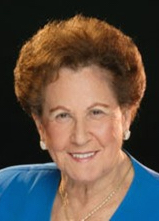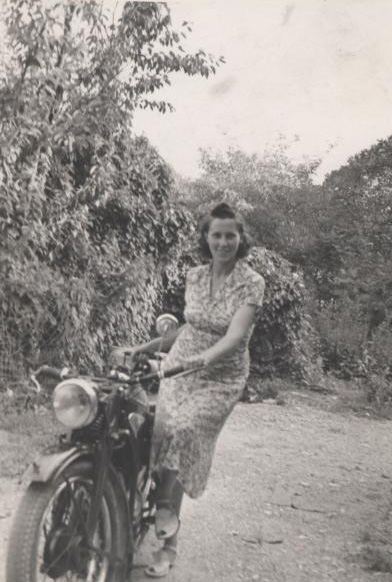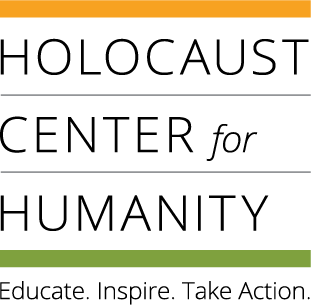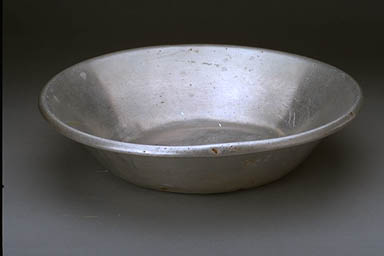This bowl was used by a woman who was a slave laborer in Allach, a labor camp in Germany. Allach was a sub-camp of Dachau.
The woman survived Allach, and when the camp was liberated in 1945, she took the bowl with her to Feldafing, a displaced persons (DP) camp in Germany. There she met Magda Schaloum, and gave her the bowl to use.
Magda, born in Hungary, was a survivor of Auschwitz, and slave labor camps Plaszow, Augsburg and Muldorf. She used this bowl as a cooking pot while in Feldafing, and brought it to Seattle in 1951.
Magda Schaloum
 Magda Schaloum was born in Gyor, Hungary. The Nazis occupied Hungary in early 1944 and anti-Jewish laws were quickly put into place. Mass roundups and deportations of the country’s Jewish population to Auschwitz began just a few months later. In June 1944, the Nazis deported Magda, her mother, and brother to Auschwitz.
Magda Schaloum was born in Gyor, Hungary. The Nazis occupied Hungary in early 1944 and anti-Jewish laws were quickly put into place. Mass roundups and deportations of the country’s Jewish population to Auschwitz began just a few months later. In June 1944, the Nazis deported Magda, her mother, and brother to Auschwitz.
“When we got to the train station, they put us in a cattle wagon. When we were inside, I looked out the window and saw my father standing just outside. He was holding in his hand a package and trying to come up to the train. I ran to the door and I thought, well, let me give him a last hug. And of course they wouldn’t let me get off the train. He couldn’t come up so he stayed there crying and we were standing at the window and we couldn’t do anything. And then train started to move. That was the last time I have seen my father.”
– Magda Schaloum, from “Never Again I Hope,” a video project produced by the Washington State Holocaust Education Resource Center (1994).
 After arriving in Auschwitz, Magda and her family were separated. Magda was sent to a series of slave labor camps, including Plaszow (near Krakow, Poland), Augsburg, and then later to Muhldorf, both in Germany. Her stay in Muhldorf was short. The Nazis rounded up the prisoners, including Magda, and loaded them into train cars. The Nazis planned to transport the prisoners to an unknown location, and murder them.
After arriving in Auschwitz, Magda and her family were separated. Magda was sent to a series of slave labor camps, including Plaszow (near Krakow, Poland), Augsburg, and then later to Muhldorf, both in Germany. Her stay in Muhldorf was short. The Nazis rounded up the prisoners, including Magda, and loaded them into train cars. The Nazis planned to transport the prisoners to an unknown location, and murder them.
As the train cars began to travel, the Nazis plan was interrupted by Allied troops that intercepted the train and liberated the prisoners.
Magda Schaloum came to Seattle in 1951. She brought with her this bowl. “Why give up something that could be useful?” she explains. This bowl from Allach, pictured on the front, has an imprint on it (see the photo above). Under the lip of the bowl are engraved the letters BMW. A capital letter “E” is to the right of this. BMW is the logo for Bayerische Motern-Werke. BMW operated factories in the sub-camps of Dachau and Buchenwald concentration camps, including Allach. The factories produced and built parts for Nazi warplanes. In Allach, Jewish inmates were forced to work in the BMW factories. In 1944 there were as many as 5,000 prisoners working at the BMW factory at Allach, Germany. Today BMW is best known for their cars.
Additional Resources
Magda Schaloum's Video Testimony


